











Do you have a question about the Polycom VVX 250 and is the answer not in the manual?
Target users, guide's goal, and skill requirements.
Entry point for product support and information.
Repository for support documentation.
Access to developer and support information.
Explanation of phone components and buttons.
Displays menu options for settings and device information.
Displays active and held calls on your line.
Displays phone lines, favorites, and softkeys.
Procedures for logging into and out of the phone.
Locking the phone and changing passwords.
How to initiate and receive audio calls on the phone.
Methods for placing calls: dialer, international, recent calls, favorites.
How to call contacts from various directories.
How to call favorite contacts from the Lines screen.
Procedures for answering an incoming call.
How to answer incoming calls during an active call.
Steps to enable automatic call answering.
Steps to answer calls on a locked phone.
How to mute and unmute the microphone during calls.
Procedures for placing calls on hold and resuming them.
Procedures for ending active and held calls.
Blind and consultative transfer methods.
Choosing a default transfer type and performing transfers.
Procedures for parking and retrieving calls on BroadSoft server.
How to ignore parked calls instead of retrieving them.
How to view call information from Lines and Calls screens.
Enabling, editing, disabling, and removing BroadWorks Anywhere locations.
Managing calls using the Remote Office feature.
Procedures for ignoring, rejecting, and silencing calls.
How to enable, disable, and configure DND for calls.
How to automatically reject calls with restricted caller identification.
Procedures for starting, joining, holding, and ending conference calls.
How to mute, hold, remove, or view participant information.
Initiating and managing advanced conference calls.
Explanation of shared line functionality and limitations.
Procedures for answering, holding, and viewing calls on shared lines.
How to barge into active calls using BLF functionality.
Using MADN-SCA to share a single line.
Procedures for placing, answering, holding, barging in, and resuming calls.
Enabling and disabling privacy for calls using codes or soft keys.
Using Simultaneous Ring to have multiple phones ring for incoming calls.
Procedures for managing numbers in the Simultaneous Ring list.
How private and shared lines function for executives and assistants.
Enabling call filtering and setting criteria for filtered calls.
How assistants answer, place, divert, pick up, barge in, and manage executive calls.
Procedures for recording, pausing, resuming, and stopping calls.
Important guidelines and notes for recording calls.
How to record conference calls.
Procedures for browsing, playing, pausing, resuming, and stopping recorded calls.
Procedures for viewing, sorting, and managing recent call entries.
Adding, searching, viewing, updating, and deleting contacts.
Accessing, searching, and managing corporate directory contacts.
Overview and procedures for viewing contacts in BroadSoft directories.
Methods for searching BroadSoft directories by name or advanced criteria.
Adding, updating, and deleting contacts in the Personal BroadSoft Directory.
Procedures for performing simple and advanced searches in the GAB.
How to save GAB contacts and search results.
Viewing, searching, adding, deleting, and updating contacts in the PAB.
Adding, ordering, viewing, and deleting favorite contacts.
How to add, view, monitor, block, and unblock contacts in your Buddy list.
How buddy status and presence icons are displayed.
Viewing UC-One contacts and favorites on various screens and lists.
How to view presence information for UC-One contacts.
Procedures for searching and filtering UC-One contacts.
How the phone indicates new voicemail and procedures to access it.
Procedures for sending, reading, replying, and deleting instant messages.
Broadcasting one-way announcements to paging groups.
How to send PTT broadcasts on channels.
How to receive and listen to PTT broadcasts, including during active calls.
Changing default channels, updating subscriptions, and enabling playback during calls.
Navigating calendar views, managing meeting reminders, and joining meetings.
How to search and view web pages using the phone's browser and navigation keys.
How to change the font size on the phone.
Managing system language, call waiting, time/date display, and themes.
Adjusting screen brightness and timeout periods.
Changing the background picture and adding personal photos.
How to enable screen savers with default or personal photos.
How to disable the screen saver feature.
How to use the phone as a digital picture frame with USB photos.
How to set office hours and timeouts for power saving mode.
How to change call notifications and set ringtones for calls and contacts.
How to change volume and enable Acoustic Fence for call quality.
Manually and automatically updating your presence status.
How to view and modify your phone's security classification level.
How to change security classification during a call.
Overview of headset settings and compatibility with Poly UC software.
Setting call alerts, mute alerts, volume indicator tones.
Adjusting bass, treble, volume, and microphone gain.
Setting dial tone and decibel limits for headset audio.
Procedures for restoring default headset settings.
Connecting and using headsets, including USB and analog types.
How to use EHS for call control via headset.
Procedures for downloading, installing, and enabling PDC via direct or indirect methods.
Navigating phone screens and using keyboard shortcuts with PDC.
How to enter text in different languages using PDC.
How to disable the Polycom Desktop Connector.
Introduction to the EM 50 module and its hardware components.
Procedures for connecting and disconnecting EM50 expansion modules.
How to assign contacts and favorites to expansion module line keys.
How the Smart Paging feature arranges and distributes pages.
How expansion module backlight intensity matches phone settings.
Features like visual indicators, adjustable audio, and EHS for accessibility.
Features like auto-answering, touchscreen, and large keys for mobility.
Features for users who are blind, have low vision, or have limited vision.
Procedures for viewing and clearing phone warnings.
How to restart the phone and update its configuration.
Procedures for testing phone hardware and cleaning the screen.
Procedures for updating, postponing, ignoring, or exiting software update notifications.
Troubleshooting speakerphone, USB port, calendar, PDC, recording, and audio issues.
Procedures for resetting the phone to factory defaults and using approved power sources.
Target users, guide's goal, and skill requirements.
Entry point for product support and information.
Repository for support documentation.
Access to developer and support information.
Explanation of phone components and buttons.
Displays menu options for settings and device information.
Displays active and held calls on your line.
Displays phone lines, favorites, and softkeys.
Procedures for logging into and out of the phone.
Locking the phone and changing passwords.
How to initiate and receive audio calls on the phone.
Methods for placing calls: dialer, international, recent calls, favorites.
How to call contacts from various directories.
How to call favorite contacts from the Lines screen.
Procedures for answering an incoming call.
How to answer incoming calls during an active call.
Steps to enable automatic call answering.
Steps to answer calls on a locked phone.
How to mute and unmute the microphone during calls.
Procedures for placing calls on hold and resuming them.
Procedures for ending active and held calls.
Blind and consultative transfer methods.
Choosing a default transfer type and performing transfers.
Procedures for parking and retrieving calls on BroadSoft server.
How to ignore parked calls instead of retrieving them.
How to view call information from Lines and Calls screens.
Enabling, editing, disabling, and removing BroadWorks Anywhere locations.
Managing calls using the Remote Office feature.
Procedures for ignoring, rejecting, and silencing calls.
How to enable, disable, and configure DND for calls.
How to automatically reject calls with restricted caller identification.
Procedures for starting, joining, holding, and ending conference calls.
How to mute, hold, remove, or view participant information.
Initiating and managing advanced conference calls.
Explanation of shared line functionality and limitations.
Procedures for answering, holding, and viewing calls on shared lines.
How to barge into active calls using BLF functionality.
Using MADN-SCA to share a single line.
Procedures for placing, answering, holding, barging in, and resuming calls.
Enabling and disabling privacy for calls using codes or soft keys.
Using Simultaneous Ring to have multiple phones ring for incoming calls.
Procedures for managing numbers in the Simultaneous Ring list.
How private and shared lines function for executives and assistants.
Enabling call filtering and setting criteria for filtered calls.
How assistants answer, place, divert, pick up, barge in, and manage executive calls.
Procedures for recording, pausing, resuming, and stopping calls.
Important guidelines and notes for recording calls.
How to record conference calls.
Procedures for browsing, playing, pausing, resuming, and stopping recorded calls.
Procedures for viewing, sorting, and managing recent call entries.
Adding, searching, viewing, updating, and deleting contacts.
Accessing, searching, and managing corporate directory contacts.
Overview and procedures for viewing contacts in BroadSoft directories.
Methods for searching BroadSoft directories by name or advanced criteria.
Adding, updating, and deleting contacts in the Personal BroadSoft Directory.
Procedures for performing simple and advanced searches in the GAB.
How to save GAB contacts and search results.
Viewing, searching, adding, deleting, and updating contacts in the PAB.
Adding, ordering, viewing, and deleting favorite contacts.
How to add, view, monitor, block, and unblock contacts in your Buddy list.
How buddy status and presence icons are displayed.
Viewing UC-One contacts and favorites on various screens and lists.
How to view presence information for UC-One contacts.
Procedures for searching and filtering UC-One contacts.
How the phone indicates new voicemail and procedures to access it.
Procedures for sending, reading, replying, and deleting instant messages.
Broadcasting one-way announcements to paging groups.
How to send PTT broadcasts on channels.
How to receive and listen to PTT broadcasts, including during active calls.
Changing default channels, updating subscriptions, and enabling playback during calls.
Navigating calendar views, managing meeting reminders, and joining meetings.
How to search and view web pages using the phone's browser and navigation keys.
How to change the font size on the phone.
Managing system language, call waiting, time/date display, and themes.
Adjusting screen brightness and timeout periods.
Changing the background picture and adding personal photos.
How to enable screen savers with default or personal photos.
How to disable the screen saver feature.
How to use the phone as a digital picture frame with USB photos.
How to set office hours and timeouts for power saving mode.
How to change call notifications and set ringtones for calls and contacts.
How to change volume and enable Acoustic Fence for call quality.
Manually and automatically updating your presence status.
How to view and modify your phone's security classification level.
How to change security classification during a call.
Overview of headset settings and compatibility with Poly UC software.
Setting call alerts, mute alerts, volume indicator tones.
Adjusting bass, treble, volume, and microphone gain.
Setting dial tone and decibel limits for headset audio.
Procedures for restoring default headset settings.
Connecting and using headsets, including USB and analog types.
How to use EHS for call control via headset.
Procedures for downloading, installing, and enabling PDC via direct or indirect methods.
Navigating phone screens and using keyboard shortcuts with PDC.
How to enter text in different languages using PDC.
How to disable the Polycom Desktop Connector.
Introduction to the EM 50 module and its hardware components.
Procedures for connecting and disconnecting EM50 expansion modules.
How to assign contacts and favorites to expansion module line keys.
How the Smart Paging feature arranges and distributes pages.
How expansion module backlight intensity matches phone settings.
Features like visual indicators, adjustable audio, and EHS for accessibility.
Features like auto-answering, touchscreen, and large keys for mobility.
Features for users who are blind, have low vision, or have limited vision.
Procedures for viewing and clearing phone warnings.
How to restart the phone and update its configuration.
Procedures for testing phone hardware and cleaning the screen.
Procedures for updating, postponing, ignoring, or exiting software update notifications.
Troubleshooting speakerphone, USB port, calendar, PDC, recording, and audio issues.
Procedures for resetting the phone to factory defaults and using approved power sources.
| Resolution | 320 x 240 pixels |
|---|---|
| SIP Protocol Support | Yes |
| Opus Support | Yes |
| Wall Mountable | Yes |
| Bluetooth | No |
| Wi-Fi | No |
| Line Keys | 4 |
| Network Interface | 10/100/1000 Mbps Ethernet |
| Audio Features | Acoustic Clarity Technology |
| Power over Ethernet (PoE) | IEEE 802.3af Class 2 |
| Headset Support | Dedicated RJ-9 headset port |
| Codecs | G.711, G.722, G.729 |
| Power | Optional external AC adapter |
| Supported Protocols | SIP |
| USB Port | USB 2.0 |
| Conference Capabilities | 3-way conference |
| Display | 2.8" color LCD (320 x 240 pixel) |
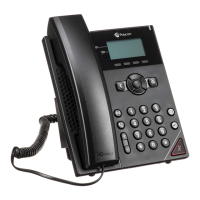

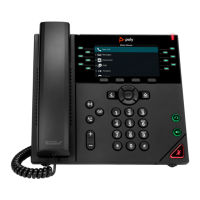
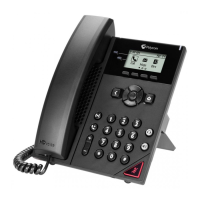
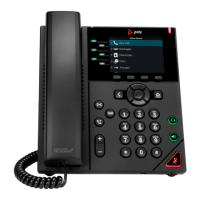
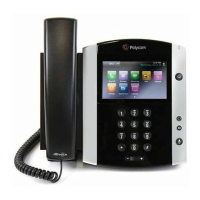
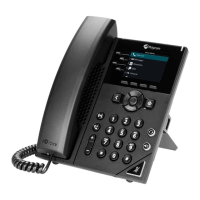
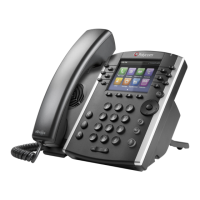
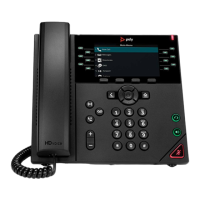
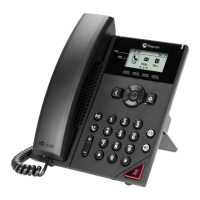
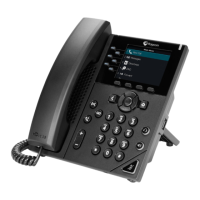
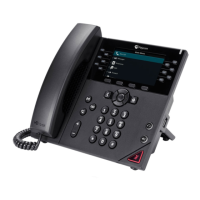
